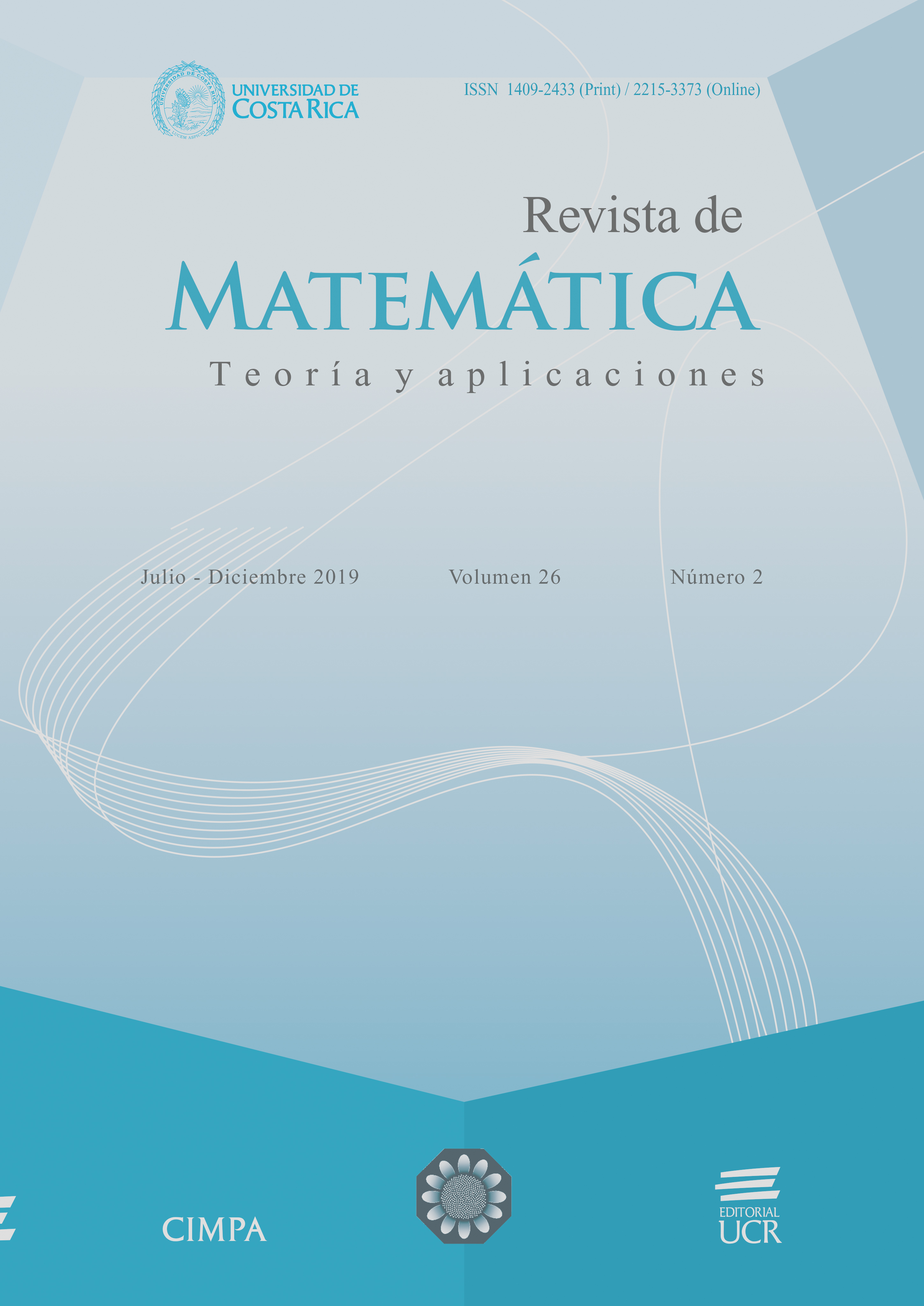Abstract
The objective of this work is to evaluate the effectiveness of an environmental policy that promotes the substitution of fossil fuels for renewable alternatives, to reduce carbon dioxide emissions. A dynamic computable general equilibrium model is used for the Mexican economy simulating economic scenarios with two elasticities of substitution, when two of the energy goods that use fossil fuels are taxed together. The impacts on aggregate production and social well-being are quantified or measured. The analysis shows that the effectiveness of the policy depends on the elasticity of substitution. The rigid scenario is partially effective, since the demands of all the energies, fossils and renewable are reduced. The flexible scenario
turns out to be effective, favoring the substitution between energies. The demand of all energies is further reduced in the rigid scenario than in the flexible. In each scenario, increasing the tax reduces GDP and social
welfare in relation to the reference equilibrium.
References
E. Aguayo, J. Chapa, N. Ramírez, E. Rangel, Análisis de la generación y redistribución del ingreso en México a través de una matriz de contabilidad social, Estudios Económicos (2009), 225–311.
C.Böhringer, A.Löschel, Promoting renewable energy in Europe: a hybrid computable general equilibrium approach, The Energy Journal 27 (2006), no. 1, 135–150.
R. Boyd, M. Ibarrarán, Costs of compliance with the Kyoto protocol: a developing country perspective, Energy Economics 24 (2002), no.1, 21– 39.
H. Bravo, J. Castro, M. Gutiérrez, E. Omaña, Evaluación de una política de sustitución de energías fósiles para reducir las emisiones de carbono, El Trimestre Económico 84(2017), no. 333, 137–164.
P. Dixon, S. Osborne, M. T. Rimmer, The economy-wide effects in the United States of replacing crude petroleum with biomass, Energy and Environment6(2007), no. 6, 709–722.
V. Ginsburgh, M. Keyzer, The structure of applied general equilibrium models, The MIT Press, Cambridge, 1997.
M. González-Eguino, Los costes de mitigar el cambio climático: un análisis dinámico de equilibrio general aplicado, Revista de Economía Aplicada XIX(2011), no. 56, 89–121.
L. Goulder, Enviromental taxation and the double dividend: a reader’s guide, International Tax and Public Finance 2(1995), no. 2, 157–183.
D. Greenaway, S. J. Leybourne, G. V. Reed, J. Whalley,Applied general equilibrium modelling: applications, limits and future development, HMSO, Londres, 1993.
Z.Guo, X. Zhang, Y. Zheng, R. Rao, Exploring the impacts of a carbón tax on the chinese economy using a CGE model with a detailed disaggregation of energy sectors, Energy Economics45(2014), no. C, 455–462.
B. Heer, A. Maussner, Dynamical general equilibrium modeling: Computational Methods and Applications, 2nd ed., Springer Verlag, Heilderberg, 2009
J. Jensen, T. Rasmussen, Allocation of CO2 emissions permits: a general equilibrium analysis of policy instruments, Journal of Environmental Economics and Management 40(2000), no. 2, 111-136.
D. W. Jorgenson, R. Goettle, M. Ho, P. Wilcoxen, Double dividend: environmental taxes and fiscal reform in the United States, MIT Press, Cambridge, 2013.
R. Kaufmann, Limits on the economic effectiveness of a carbon tax, The Energy Journal 12(1991), no. 4, 139–144.
B. Kretschmer, S. Peterson, Integrating bioenergy into computable general equilibrium models – a survey, Energy Economics 32 (2010), no. 3, 673–686.
G. Landa, F. Reynes I. Islas, F. Bellocq, F. Grazi, Towards a low carbon growth in Mexico: is a double dividend possible? A dynamic general equilibrium assessment, Energy Policy96(2016), 314-327.
OECD/IEA, Energy policies beyond IEA countries: México 2017, https://webstore.iea.org/ energy-policies-beyond-iea-countries-mexico-2017, consulted on 04-Feb-2019, 15:30 p.m.(2017)
OECD/IEA, Mexico energy outlook, world energy outlook special report, https://www.iea.org/publications/ freepublications/publication/MexicoEnergyOutlook. pdf, consulted on 04-Feb-2019, 15:34 p.m.
S. Paltsev, Moving from static to dynamical general equilibrium economic models (Notes for beginner in MPSGE), Joint Program on the Science and Policy of Global Change, 2004.
S. Paltsev, J. Reilly, H. Jacoby, R. Eckaus, J. McFarland, M. Saro?m, M. Asadoorian, M. Babiker,The MIT emissions prediction and policy analysis (EPPA) model: versión 4, MIT Joint Program on the Science and Policy of Global Change, Report. 125, Cambridge, 2005.
C. Papageorgiou, M. Saam, P. Schulte, Elasticity of substitution between clean and dirty energy inputs: a macro economic perspective, ZEW-Centre for European Economic Research, Discussion Paper (2013), no. 13-087.
K. Pearson, B. R. Parmenter, A. A. Powell, P. J. Wilcoxen, P. B. Dixon, Notes and problems in applied general equilibrium economics, 1st ed., Elsevier, 1992.
S. Rausch, M. Mowers, Distributional and efficiency impacts of clean and renewable energy standards for electricity, Resource and Energy Economics36(2014), no. 2, 556–585.
J. Romero, Energía, emisiones y precios relativos (Antonio Yúnez-Naude, ed.),Medio Ambiente: Problemas y Soluciones,ColegiodeMéxico,1994.
T. Rutherford, Applied general equilibrium modeling with MPSGE as a GAMS subsystem: an overview of the modeling framework and syntax, preprint, 1995.
T. Rutherford, Extension of GAMS for complementary problems arising in applied economic analysis, Journal of Economic Dynamics and Control19 (1995), no. 8, 1299–1324.
T.Rutherford,Dynamic general equilibrium with GAMS/MPSGE, Lectures Notes Prepared for the UNSW Workshop, 2004.
X. Sala-i-Martin, Apuntes de crecimiento económico, 2nd ed., Antoni Bosch Editor S.A., Madrid, 2000.
SENER, Balance nacional de energía 2015, https://www.gob. mx/cms/uploads/attachment/file/248570/Balance_ Nacional_de_Energ_a_2015__2_.pdf
SENER/CONUEE, Estrategia de transición para promover el uso de tecnologías y combustibles más limpios, https://www.gob.mx/cms/ uploads/attachment/file/182202/20161110_1300h_ Estrategia_CCTE-1.pdf
G. Solveig, H. Vennemo, T. Johnsen, Stabilization of emissions of CO2: a computable general equilibrium assessment, Scandinavian Journal of Economics94(1992), no. 1, 53–69.
L. Tang, J. Shi, L. Yu, Q. Bao, Economic and environmental influences of coal resource tax in China: a dynamic computable general equilibrium approach, Resources, Conservation and Recycling117(2017), 34–44.
G. Timilsina, R. Shrestha, General equilibrium analysis of economic and environmental effects of carbon tax in a developing country: case of Thailand, Environmental Economics and Policy Studies 5 (2002), no. 3, 179–211. [34] UNEP/ONU, Resumen de las evaluaciones regionales del sexto informe sobre las perspectivas del medio ambiente mundial: resultados principales y mensajes políticos, https://wedocs.unep.org/ bitstream/handle/20.500.11822/7688/-Resumen_de_ las_evaluaciones_regionales_del_sexto_informe_ sobre_las_perspectivaas_del_medio_ambiente_ mundial_GEO-6_Resultados_principales_y_mensajes_. pdf?sequence=3&isAllowed=y
Y. Yuan, Y. Lu, Dynamic general equilibrium analysis on the impacts of carbón tax on Chinese economy, 2011 2nd International Conference on Artificial Intelligence, Management Science and Electronic Commerce, Deng Feng, China, 2011.
##plugins.facebook.comentarios##

This work is licensed under a Creative Commons Attribution-NonCommercial-ShareAlike 4.0 International License.
Copyright (c) 2019 Revista de Matemática: Teoría y Aplicaciones





